Let’s face it, we have all spent hours looking at sunscreens online, trying to decide which one to buy. Searching for a good sunscreen can be very confusing, especially since there are so many options to choose from.
There are many factors to consider while picking a sunscreen – the right SPF, protection from both UV A and UV B rays, reef safety, sunscreen ingredients, etc.

With an ample number of buzzwords floating around, it can become difficult to know whether the product we choose, is genuine or not.
The best way to ensure that the sunscreen we choose is safe and works as it claims to, is by reading the product labels carefully. This will help us make an informed decision about the ingredients we put on our skin.
Why is it important to read cosmetic and sunscreen labels?

Most cosmetics sold in the U.S are regulated by the Food and Drug Administration (FDA). Both the ingredients and the final products must meet several safety standards and labeling criteria, before they reach the consumer.
Very few consumers are actually aware of these laws. Many of us don’t even know what goes into the products we use regularly. Reading the label on beauty products can help us to:
- Differentiate between good and harmful ingredients;
- Know the certifications and safety standards, and their shelf life;
- Understand the correct directions to use the product.
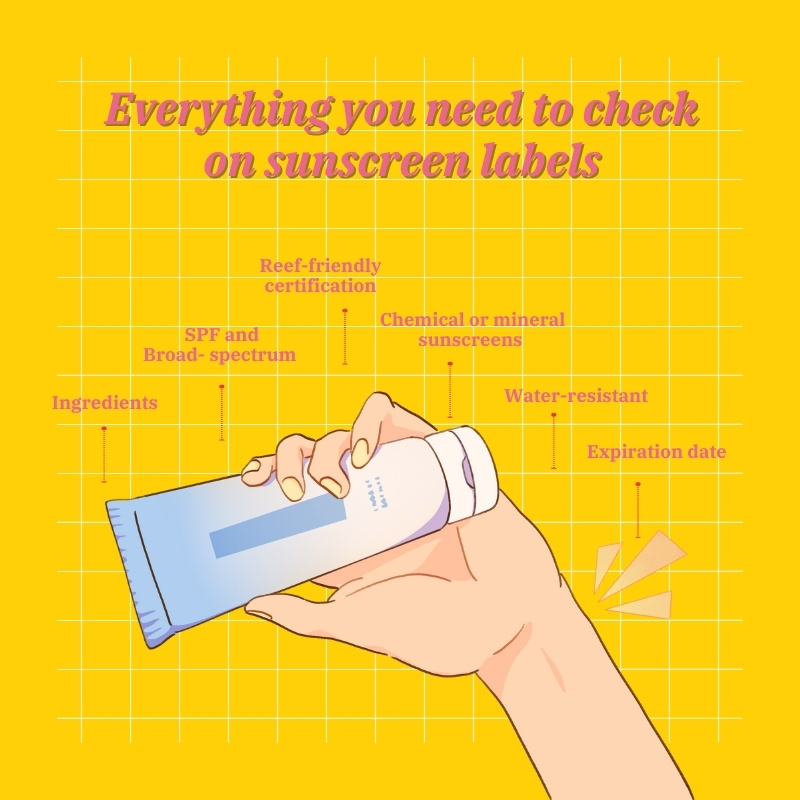
When it comes to sunscreens, there are certain tests every manufacturer needs to follow, including SPF and Broad-Spectrum Tests. They ensure the sunscreens’ effectiveness against sunburn and UV A and UV B rays, respectively.
Other than this, regulations also prevent labeling sunscreens using terms such as sunblock, waterproof, and sweatproof, as no sunscreen can truly be one of these. These exaggerated terms were only used for marketing purposes.
How to read sunscreen labels?
Here is our good guide on how to read sunscreen labels to get the ultimate sun protection for your skin. These easy steps will help you choose sun care products that are mindfully curated and work just the right way.
1. Look for the right SPF

SPF or the sun protection factor, is the relative measure of sunburn protection provided by a sunscreen, according to the FDA. It helps us compare the level of sunburn protection that different sunscreens offer.
It is advised to choose a sunscreen with at least an SPF 15. If you are very fair, then you might need a higher SPF between 30 to 50.
Another important point to keep in mind is that the SPF number only determines protection against UV B radiation and not UV A radiation. For complete protection, you will need broad-spectrum sunscreen.

Myth: SPF is relative to the time we can endure sun exposure. So, if someone gets sunburnt in an hour, SPF 30 will protect them for 30 hours (I.e., 30 times longer).
Truth: No, SPF does not relate to time at all. Rather, it is in relation to the amount of sun exposure (or that of UV rays). In other words, SPF tells how well a certain sunscreen will protect you from UV rays and prevent you from getting sunburnt.
It means SPF 30 will reflect or absorb more UV B radiation as compared to SPF 15. During the afternoon, the sun’s rays are more intense. So, you will need to reapply sunscreen more frequently during these hours, than during early mornings and late evenings, irrespective of the SPF.
2. Opt for broad-spectrum sunscreens
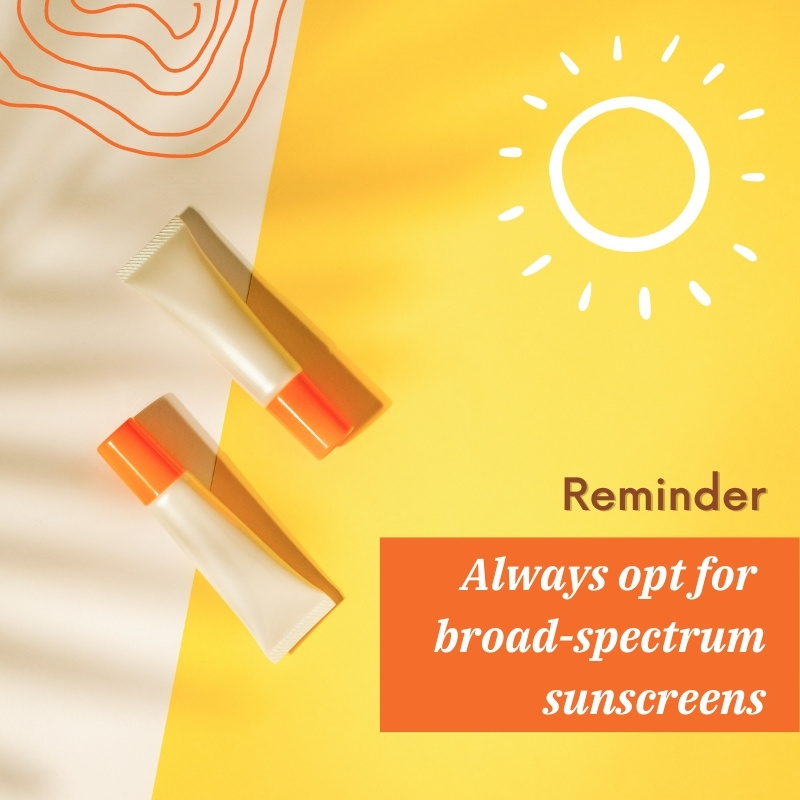
A broad-spectrum label refers to protection from both UV A and UV B radiation. Prolonged exposure to both UV A and UV B rays is responsible for causing cancer.
UV B radiation damages the top layer of the skin and is the main culprit behind the reddening and burning of the skin, causing sunburn.
Whereas UV A radiation penetrates deeper into the skin. This result mostly in signs of skin aging, including wrinkles, sagging, and pigmentation.
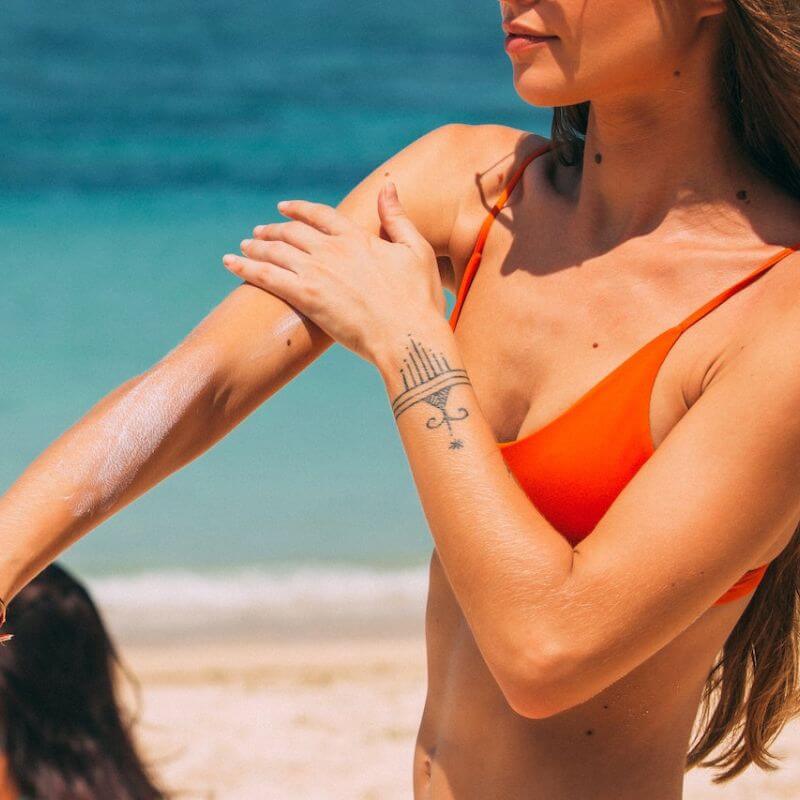
You might find PA+ ratings on some products (mostly Asian brands). These ratings indicate the level of protection that the sunscreen offers against UV A rays. The more the number of + signs, the higher the protection.
It is always good to choose broad-spectrum sunscreens with a higher SPF number to avoid sun damage and the risk of skin cancer.
3. Know the difference between chemical vs. mineral sunscreens
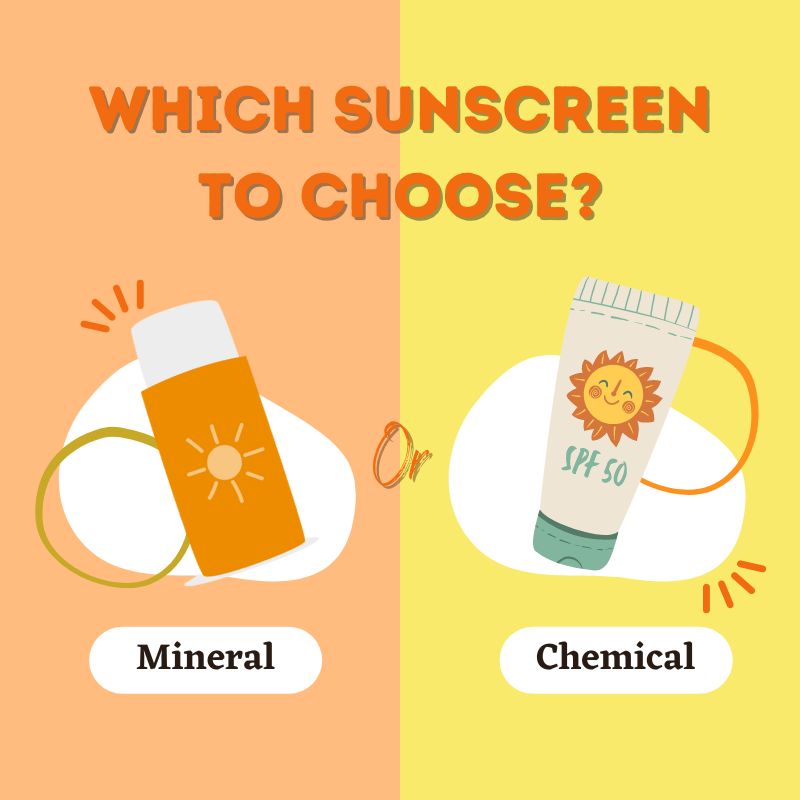
Chemical sunscreens have chemical UV filters like octocrylene and homosalate that absorb UV radiation and emit it in the form of heat. This type of sunscreen is more popular among people who want a lightweight formulation with no white cast.
However, some ingredients in chemical sunscreens have been highly condemned due to their effects on our health and on ocean life, as per previous studies. One such ingredient is oxybenzone.
Enter physical or mineral sunscreens. These sunscreens have physical UV blockers, such as zinc oxide, and titanium dioxide, that reflect UV radiation. Such sunscreens are a great choice for people with sensitive skin as they do not have any chemical irritants in them.
When choosing a mineral sunscreen, it is important to choose non-nano formulations, as nanoparticles in sunscreens can have harmful effects on our skin and on marine life.
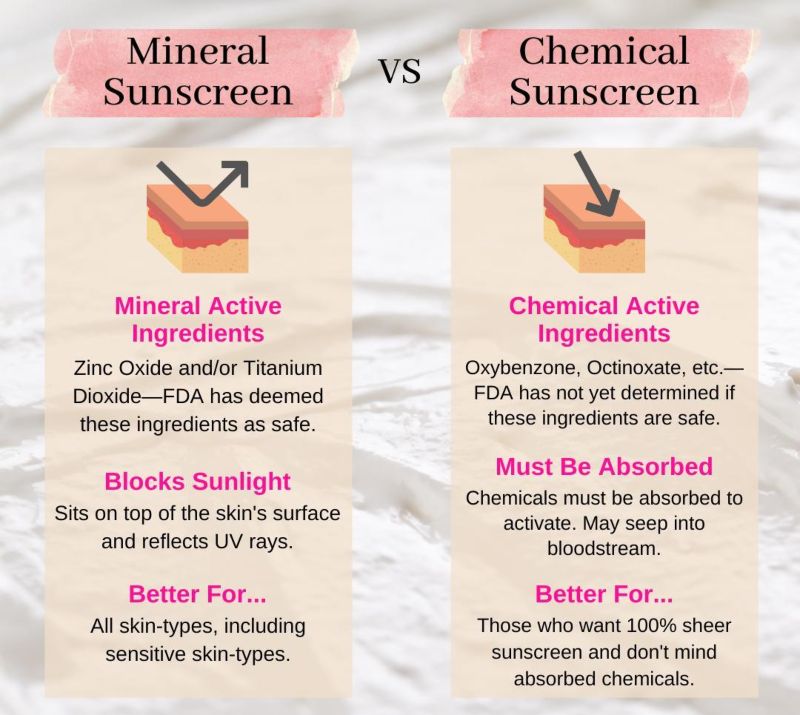
The debate on which of the two, mineral and chemical sunscreens is better, has been going on for quite some time. In our opinion, it is always best to choose the best of both worlds, a good chemical sunscreen that also contains physical blockers that provide double-layer protection.
These sunscreens are commonly known as hybrid sunscreens, and are slowly gaining popularity. Learn more about them in our article – Are Mineral Sunscreens Actually Better Than Chemical Sunscreens?
4. Understand the common terms found on sunscreen labels
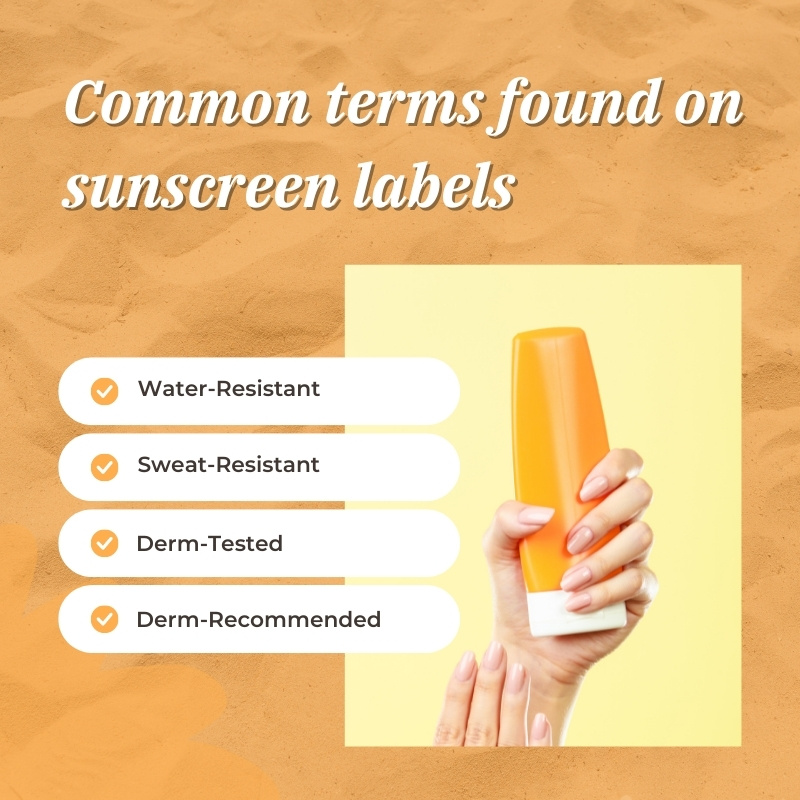
While reading labels, we often come across various labels like reef-safe, water-resistant, derm-tested, etc. Have you ever wondered what these labels actually mean? And are these labels regulated by any government body? Let us find out.
- Water-resistant or Sweat-resistant
As per the FDA guidelines, no manufacturer can label sunscreen as sweatproof or waterproof. It is because no sunscreen is truly waterproof or sweatproof.
However, sunscreens can be water-resistant and sweat-resistant. This means that the sunscreen will wear off in sometime, after it encounters water or sweat.
Hence, you will need to reapply your sunscreen every few hours, if you are out swimming or are sweating too much.
- Derm-tested vs. Derm-recommended
Derm-tested and derm-recommended is something we commonly see on many sunscreen websites. While they sound quite similar, they have quite different meanings.
When a company specially asks a dermatologist to test their products, it is labeled as derm-tested. Some companies ask dermatologists whether or not they will recommend the said product to their patients. This is called derm-recommended.
However, there are no set rules or regulating bodies behind these labels. It can differ from person to person. One dermatologist might recommend a product, while another would not. It’s quite subjective!
5. Don’t get confused between face and body sunscreens
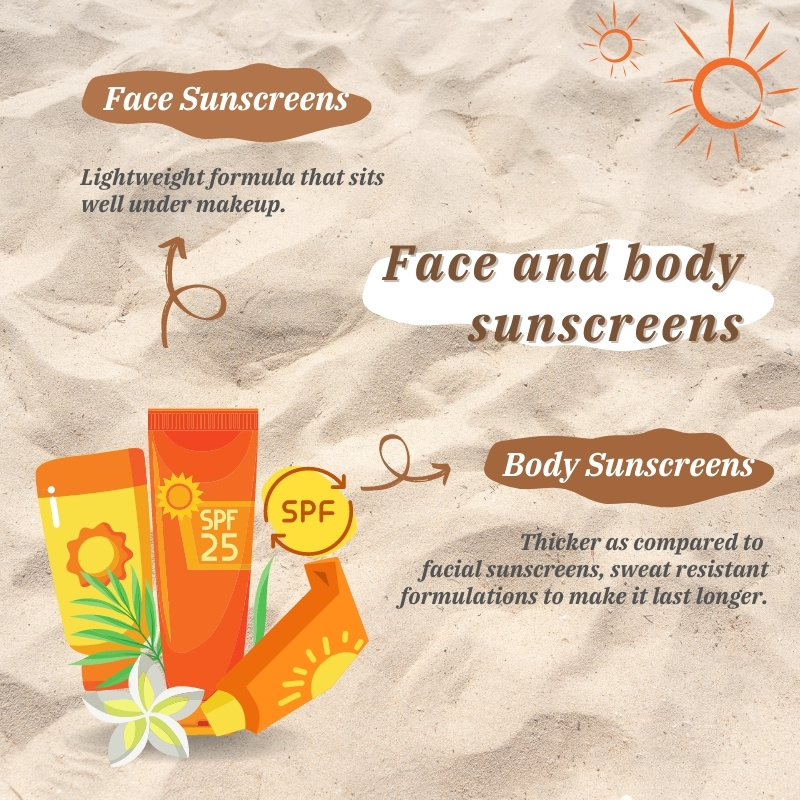
It is vital not to get mixed up between face and body sunscreens. Both are designed differently. Facial sunscreens have formulations that do not clog pores and have a lightweight formula that fits well with other skincare and makeup products.
For most of us, our bodies sweat more as compared to our faces. This is another reason why both sunscreens differ in texture. Body sunscreens are thicker to help with the longevity of the SPF product applied.
6. Choose reef-friendly certified sunscreens
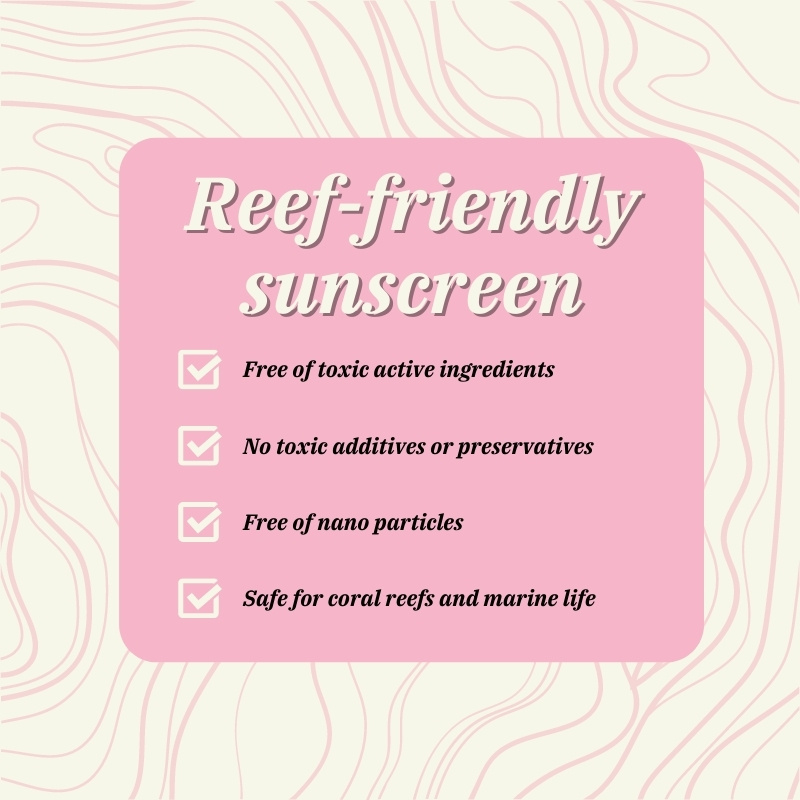
Approximately, 14,000 tons of sunscreen get washed in the ocean every year. The worst part is that certain ingredients in sunscreens adversely affect marine life resulting in issues like coral bleaching and birth defects in many species.
One solution to this problem is opting for reef-friendly certified formulations. The reef-friendly certificate by BIORIUS ensures the sunscreen is formulated without ingredients, preservatives, and additives that are toxic to the coral reefs.
The certification also makes sure that the sunscreens are water-resistant and free of nanoparticles. Two commonly known active ingredients found in reef-friendly sunscreens include zinc oxide and titanium dioxide (both non-nano).
Toxic ingredients for coral reefs include oxybenzone (benzophenone-3), octinoxate (octyl methoxycinnamate), octocrylene, PABA derivatives (e.g. ethylhexyl dimethyl PABA and PEG-25 PABA), homosalate, 4-methyl benzylidene camphor, octisalate (Ethylhexyl Salicylate), and avobenzone (Butyl Methoxydibenzoylmethane).
Other toxic additives and preservatives to avoid in sunscreen are parabens, phthalates, triclosan, and microplastics.
Related Article: What Makes Sunscreens Reef-Safe? How To Find The Most Ocean-Friendly SPF?
5 Sunscreen ingredients you should skip altogether

Yes, some sunscreens contain harmful ingredients, that will do more harm than good. Here is a list of harmful sunscreen ingredients that are a big NO-NO!
1. Oxybenzone
Oxybenzone is a form of estrogen which particularly has raised some huge concerns when it comes to coral health. Making it a not-so-good ingredient to add to your skincare regime.
Another reason, this ingredient tops our list of sunscreen ingredients to avoid; also, this ingredient is strictly banned in Hawaii.
According to the Environmental Working Group (EWG), it is one of the most troubling ingredients in sunscreens, and it can cause hormonal disruption in humans too.
2. Avobenzone
According to the EWG, this sunscreen ingredient is particularly not good as it is not very stable. It photodegrades easily and loses its shielding properties against UV rays. This ingredient is also a common irritant thus, not a very good choice for those with sensitive skin.
To make it stable to be used in sunscreens, it is mixed with other stabilizers (mostly Octisalate, which again has moderate toxicity concerns as per the EWG).

3. Retinyl palmitate
This is a form of Vitamin A, which is considered a really good ingredient for our skin health. However, retinyl palmitate as a sunscreen ingredient is not really a good idea as it does exactly the opposite of what we expect it to do.
When this ingredient comes in contact with UV rays, it becomes a potential carcinogen. Certain animal studies have proved that this popular anti-aging treatment does not fit well as a sunscreen ingredient.
4. Octinoxate
Octinoxate is another organic UV filter and commonly used sunscreen ingredient that is banned in Hawaii for the safety of coral reefs. This chemical is also known to cause skin allergies after it’s exposed to UV radiation.
Some animal studies have also shown that it has adverse effects on metabolic systems and thyroid hormone production.
5. Fragrances
Generally, fragrances used in cosmetic products are man-made. In most cases, the chemicals used to make these fragrances are not disclosed. Also, fragrances are among the most common allergens found in cosmetics.
It is best to opt for fragrance-free sunscreens (and cosmetics).
Other than these, it is particularly advised to not choose nano sunscreens. This means sunscreens with particle sizes, less than 9mm. These nanoparticles, instead of shielding our skin, end up reacting with UV rays resulting in sun damage and even skin cancer.
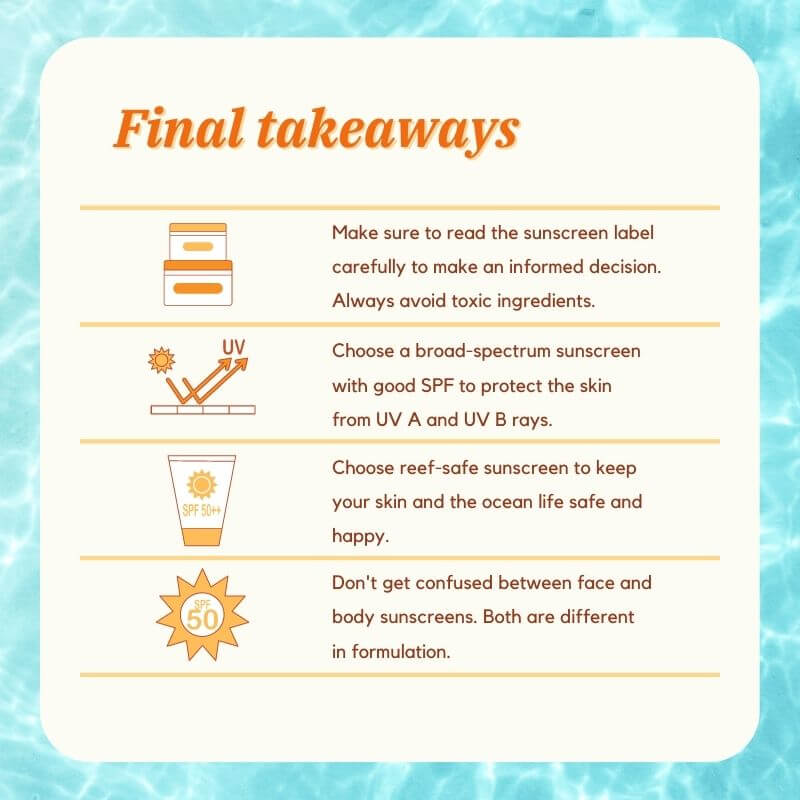
Irrespective of shopping online or offline, whichever sunscreen you purchase, take a close look at the labels before you do. Since most of us use sunscreens on a daily basis, it is imperative to know what goes into your sunscreen, before you apply it to your skin.
Understanding the sunscreen ingredients and common terms on the labels will help you make an informed buying decision.
Happy Shopping!
Frequently Asked Questions
1. What is the main ingredient of sunscreen?
UV filters are the main ingredient for sunscreens. Mineral sunscreens have physical UV filters like zinc oxide and titanium dioxide that reflect the UV rays. Chemical sunscreens have chemicals, such as avobenzone and homosalate, that absorb UV radiation.
2. What ingredients should not be in sunscreen?
The following ingredients should not be in your sunscreen –
Active ingredients:
- Oxybenzone
- Avobenzone
- Retinyl palmitate
- Octinoxate
- Nanoparticles
Other Ingredients:
- Parabens
- Phthalates
- Triclosan
- Microplastics
- Fragrances
3. What are the 2 types of sunscreens?
The two types of sunscreens are physical or mineral sunscreen and chemical sunscreen.









